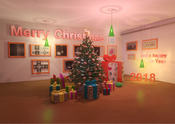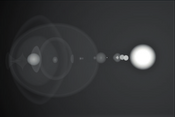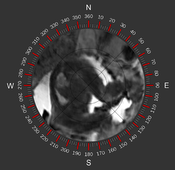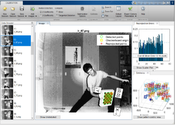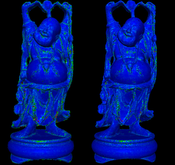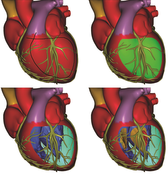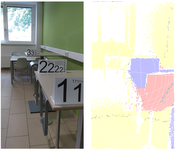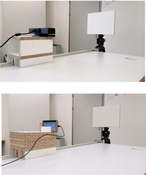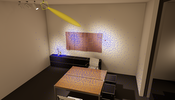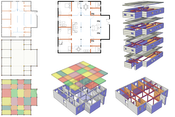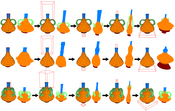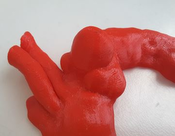Show images of current Projects | Years: 2016 - 2017 - 2018.
X-Mas Cards
Every year a christmas card showing aspects of our research projects is produced and sent out.VRVis Competence Center
The VRVis K1 Research Center is the leading application oriented research center in the area of virtual reality (VR) and visualization (Vis) in Austria and is internationally recognized. You can find extensive Information about the VRVis-Center here
Visual Computing: Illustrative Visualization
The central focus of our research is to understand visual abstraction. Understanding means 1. to identify meaningful visual abstractions, 2. to assess their effectiveness for human perception and cognition and 3. to formalize them to be executable on a computational machinery. The outcome of the investigation is useful for designing visualizations for a given scenario or need, whose effectiveness can be quantified and thus the most understandable visualization design can be effortlessly determined. The science of visualization has already gained some understanding of structural visual abstraction. When for example illustrators, artists, and visualization designers convey certain structure, or visually express how things look, we can often provide a scientifically-founded argument whether and why is their expression effective for human cognitive processing. What has not been given sufficient scientific attention to, is advancing the understanding of procedural visual abstraction, in other words investigating visual means that convey what things do or how things work. This missing piece of knowledge would be very useful for visual depiction of processes and dynamics that are omnipresent in science, technology, but also in our everyday lives. The upcoming project will therefore investigate theoretical foundations for visualization of processes. Physiological processes that describe the complex machinery of biological life will be picked as a target scenario. The reason for this choice is two-fold. Firstly, these processes are immensely complex, are carried-out on various spatial and temporal levels simultaneously, and can be sufficiently understood only if all scales are considered. Secondly, physiological processes have been modeled as a result of intensive research in biology, systems biology, and biochemistry and are available in a form of digital data. The goal will be to visually communicate how physiological processes participate on life by considering the limitations of human perceptual and cognitive capabilities. By solving individual visualization problems of this challenging target scenario, the research will provide first pieces of understanding of procedural visual abstractions that are generally applicable, beyond the chosen target domain. Prototype implementation of the developed technology is available at the GitHub repository: https://github.com/illvisation/
Prototype implementation of the developed technology is available at the GitHub repository:
https://github.com/illvisation/
cellVIEW
cellVIEW is a new tool that provides fast rendering of very large biological macromolecular scenes and is inspired by state-of-the-art computer graphics techniques. Click here for additional information.
Invited Talks
18.11.2016: Arthur J. Olson, Envisioning the Visible Molecular Cell
17.10.2016: Kwan-Liu Ma, Emerging Topics for Visualization Research: Part1, Part2
07.10.2016: Marc Streit, From Visual Exploration to Storytelling and Back Again
04.12.2015: Jan Palacek, Visual Analysis of Protein Complexes: From Protein Interaction to Cellular Processes
19.04.2013: Jan Koenderink, Shape in Visual Awareness

